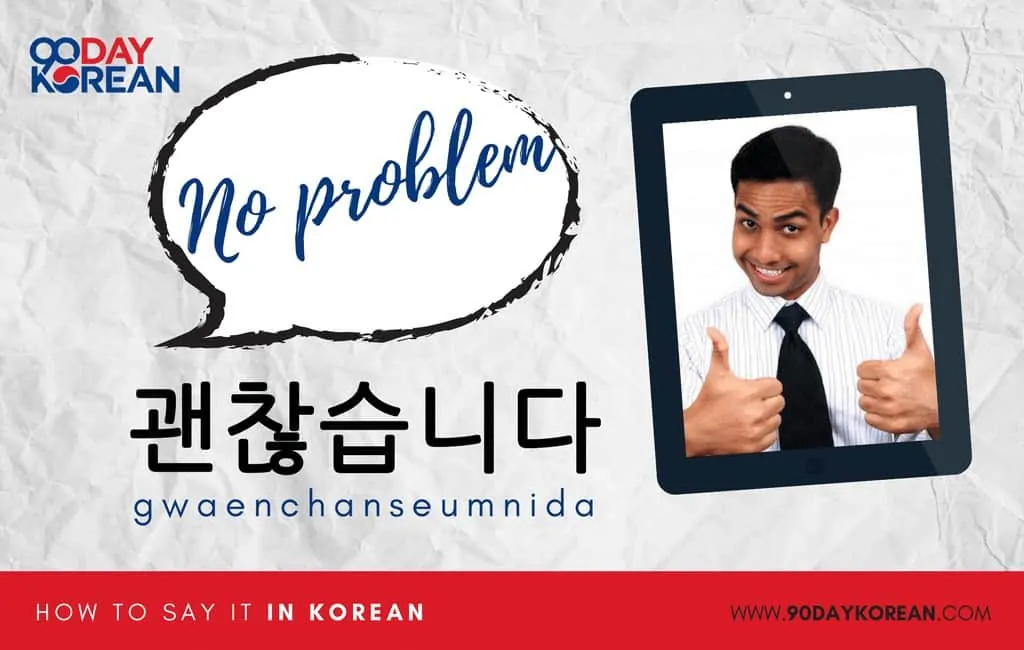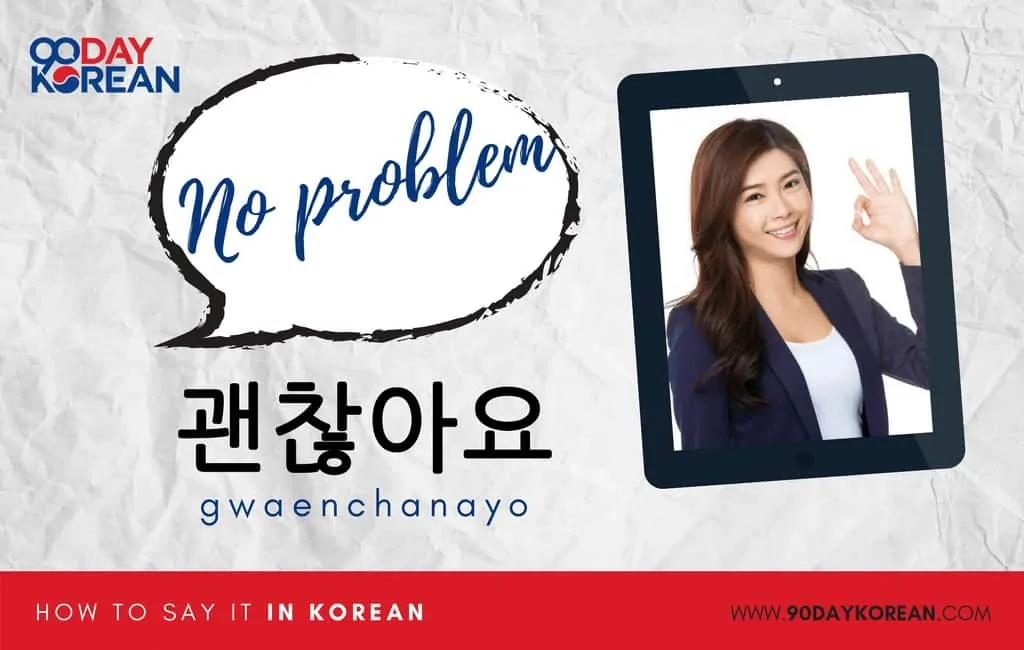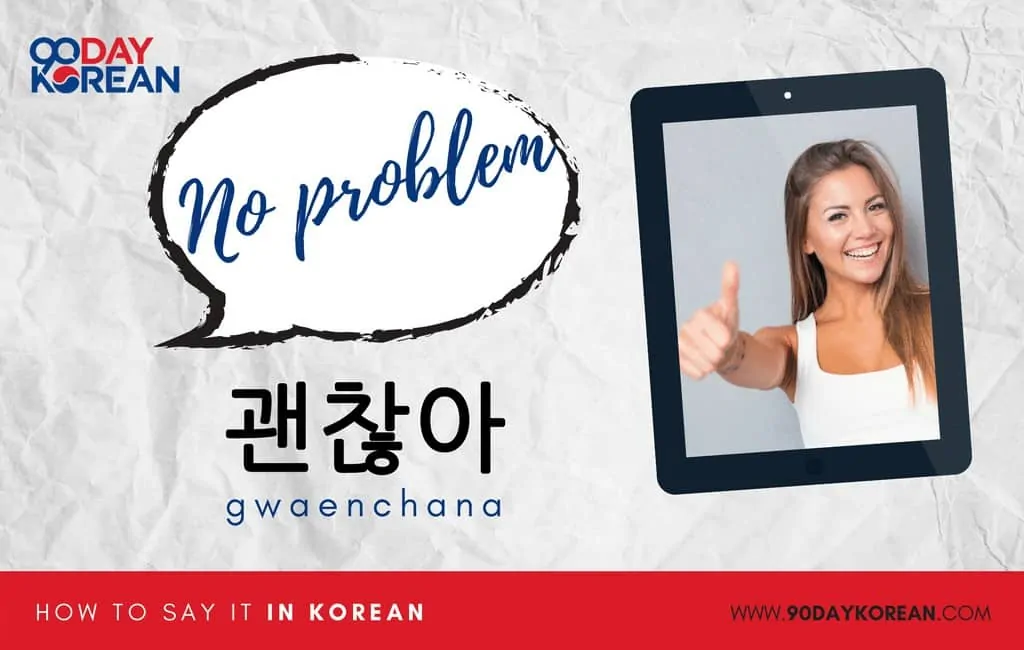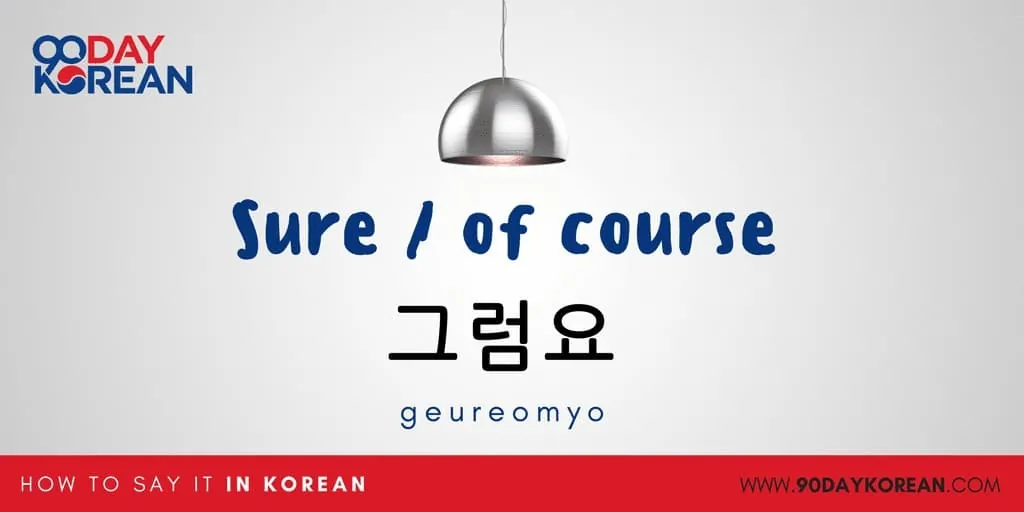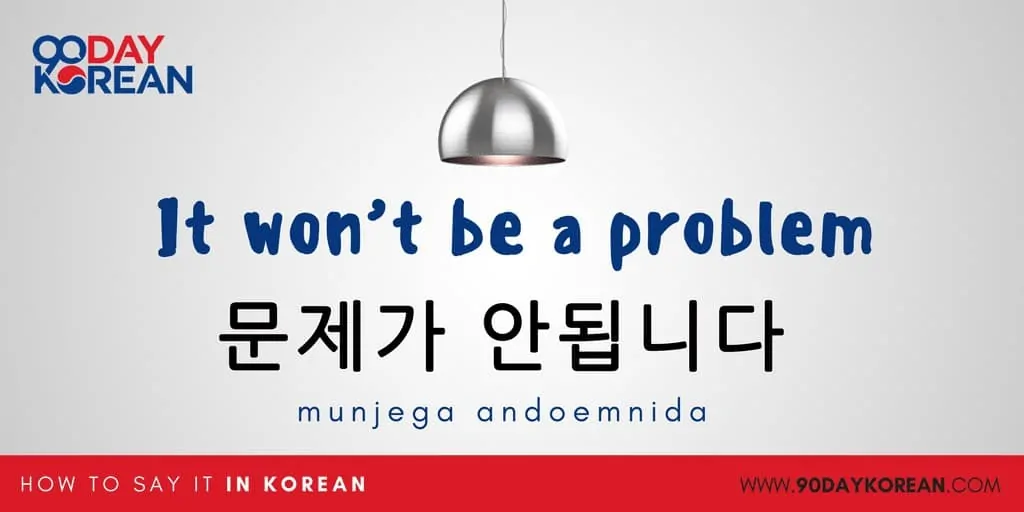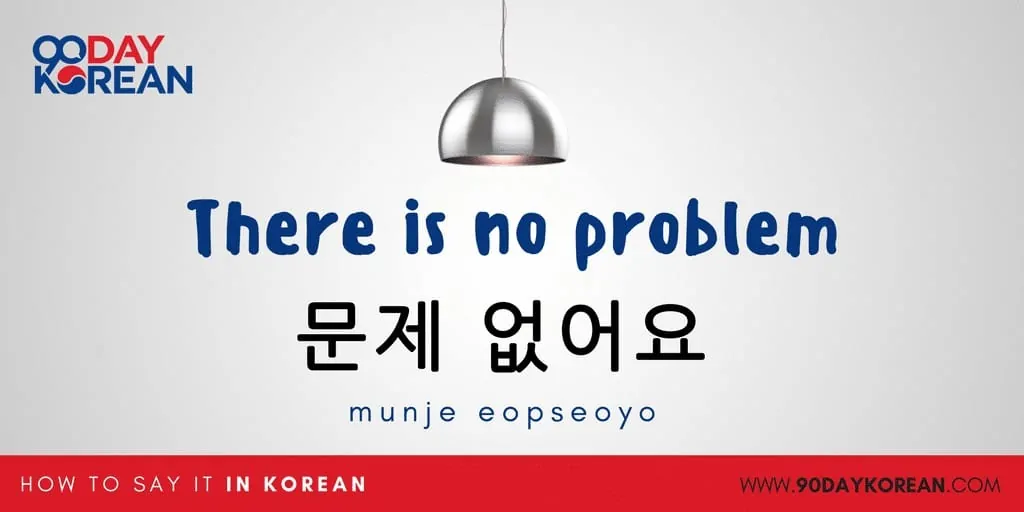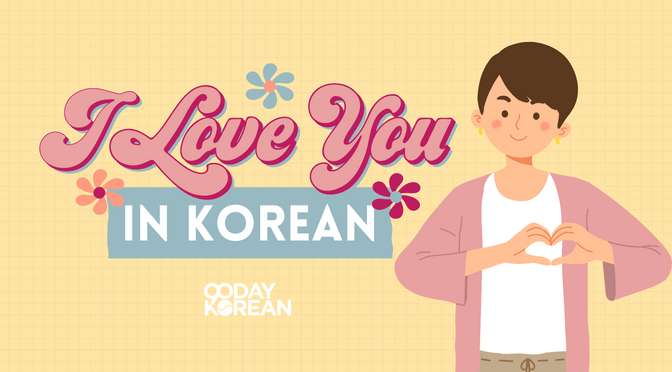Is someone asking you for a favor or thanking you for your help, but you don’t know quite how to respond to them? Now is the perfect opportunity for you to learn Korean, specifically the correct way to reply, by being taught how to say “no problem” in Korean!
All of the Korean vocabulary you’ll learn below will be in Hangeul (Korean Alphabet) with Romanized Korean next to it. We recommend learning the Korean alphabet so you can learn these terms faster and have accurate pronunciation. You can download a free guide here and be reading Korean words in about 1 hour.
Being able to read the Korean alphabet will help you retain the core Korean words you should learn first. It will also improve your overall Korean language learning plan.
Contents
Different ways to say “No Problem” in Korean
There are various ways to say “no problem” in Korean, but the most common one is by saying 괜찮아요 (gwaenchanayo), which you might already be aware is also the most common way to express the phrase “it’s okay” in Korean.
Sometimes, you’ll also hear 천만에요 (cheonmaneyo) being used to express “no problem;” however, this is usually solely reserved for situations requiring the response of “you’re welcome.” A lot of Koreans also consider this phrase to be outdated and silly to use.
Formal “No Problem” in Korean
You’ll most often use this version of “no problem” with elders, those with higher status than you, or people you don’t know well.
1. 괜찮습니다 (gwaenchanseumnida)
Standard “No Problem” in Korean
This version of the phrase can be used in most situations. It’s often used with people who you don’t know well yet or those older than you.
1. 괜찮아요 (gwaenchanayo)
Informal “No Problem” in Korean
If you’re speaking with people younger than you or whom you have a close personal relationship with, then you can use this version.
1. 괜찮아 (gwaenchana)
When to Use “No Problem” in Korean
You can use this whenever someone asks you for a favor or is thanking you for your help. In addition, you can use this if someone accidentally bumps into you.
Other Ways to Say “No Problem” in Korean
Here are a few more ways to say “no problem” in Korean. Note that although they are useful, they are not as popular to use for this particular meaning.
1. 그럼요 (geureomyo)
2. 문제가 안됩니다(munjega andoemnida)
3. 문제 없어요 (munje eopseoyo)
Wrap Up
For those of you who might have been worried that the phrase “no problem” is somehow complex to use in Korean, fear no more! As you can see, it’s quite simple. And the best way for you to ensure that you’ll remember it in all the right situations in the future is simply by starting to use it right now!


